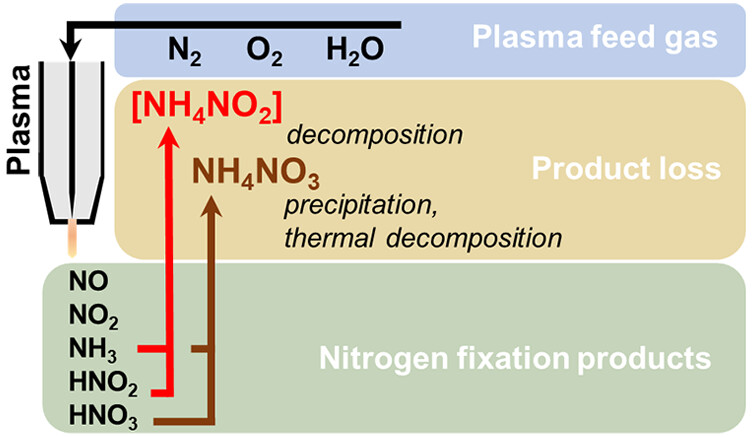The current global energy crisis has made it critical to investigate non-fossil-fuel-based nitrogen fixation (NF) methods for synthetic fertiliser production. One of these techniques is plasma-based NF. Plasma is an ionised gas that can operate on a decentralised, small-scale basis using abundant feedstocks such as air, nitrogen, and water.
Researchers recently investigated the selectivity of plasma-based NF in air and nitrogen discharges at relative humidity up to 100% at 20°C. Utilizing a pulsed plasma jet, which had previously been used to examine record-low energy consumption in the case of NOx generation from dry air, this study examined record-low energy usage.
Researchers discovered that the gaseous H2O in the plasma feed gas played the most significant role in NF. When H2O vapour was added to the plasma feed gas, both dissolved NH4+ and NOx– were produced, according to their findings. The research demonstrated the in situ production of NH3 from N2 and air with H2O vapour.
One of the greatest benefits of plasma-based NF is its potential for small-scale, decentralised production, which eliminates transportation expenses. This makes it an environmentally and economically friendly alternative to the large-scale, centralised production of synthetic fertilisers via the Haber-Bosh process.
Although plasma-based NF cannot fully replace the Haber-Bosh process, it is an attractive supplementary technology for NF, particularly in remote areas with abundant renewable electricity. The findings of this study are essential for optimising plasma-based NF and minimising the loss mechanism of NH3 and HNO2 in systems in which these species are simultaneously synthesised. In-line removal of HNO2 or direct solvation in liquid are among the proposed strategies for mitigating this loss mechanism.
In conclusion, the study demonstrates the potential of plasma-based NF as an alternative to the Haber-Bosh process, as well as the significance of plasma-based NF in ensuring the continuous enhancement of synthetic fertiliser production. The findings highlight the importance of exploring alternative NF methods to reduce the environmental burden associated with the production of synthetic fertilisers.
The full article can be found here: https://doi.org/10.1021/acssuschemeng.3c00208
Taking the forefront in the movement towards a sustainable energy future through the implementation of eco-friendly ammonia and hydrogen solutions.
